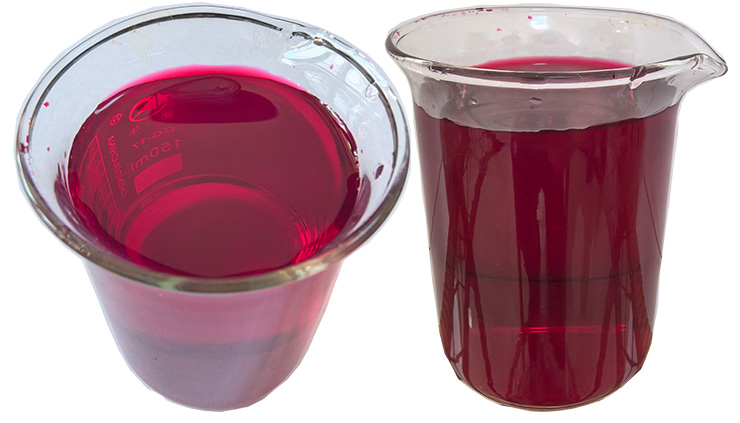Beet red, also known as beet root red, is a natural pigment derived from edible red beets. It is produced through extraction, separation, concentration, and drying processes. Its main components are betacyanins and betaxanthins. Beet red appears as a red-purple to deep purple liquid, block, powder, or paste, with a distinct odor. It is easily soluble in water, milk, 50% ethanol, or propylene glycol aqueous solutions but poorly soluble in anhydrous ethanol, propylene glycol, and acetic acid. It is insoluble in organic solvents such as ether, acetone, chloroform, benzene, glycerin, and oils. Beet red solutions in water range from red to purple-red with bright colors.

Characteristics
- The aqueous solution of beet root red exhibits colors from red to red-purple.
- Stability is optimal at pH 4.0–5.0 and relatively stable between pH 3.0–7.0.
- It has excellent dyeing properties but poor heat resistance, degrading faster at higher temperatures.
- Light and oxygen also accelerate degradation.
- Ascorbic acid offers some protective effects.
- Stability increases as the water activity (Aw) of food decreases.

Regulatory Standards
Beet root red is mainly used in canned foods, flavored water, fruit powders, syrups, sodas, candies, liqueurs, and industries like pharmaceuticals and cosmetics. It is an ideal coloring agent for ice creams, dairy products, jams, and jellies.

Properties
- Heat Resistance: Poor, with a decreasing residual rate as temperature and duration increase.
- Oxidation Resistance: Low; residual pigment diminishes with higher levels of hydrogen peroxide and prolonged exposure.
- Reduction Resistance: Low; the residual pigment diminishes with increasing sodium sulfite and longer exposure.
- Certain chlorides, like bleaching powder or sodium hypochlorite, can cause beet red to fade.
- Adding antioxidants like 50%-100% L-ascorbic acid prevents photo-degradation. Stability improves as water activity decreases. When water activity drops from 1.0 to 0.37, stability increases approximately fourfold.

Safety
- The acceptable daily intake (ADI) is not restricted (FAO/WHO, 1994).
- Red beet is a commonly consumed vegetable with no adverse effects on human health.
- Beet red, being a component of beetroot, is considered non-toxic.
- Betalains are pharmacologically inert and non-mutagenic.
Applications
According to the “Hygienic Standards for the Use of Food Additives,” beet red can be used in:
- Flavored beverages (liquid and solid), juice-based drinks, sodas, liqueurs, candies, pastries, colorful toppings, fruit preserves, concentrated juices, plums, ice creams, jellies, wafers, and sandwich fillings.
- Usage should align with production requirements.
In practice, beetroot red offers excellent coloring properties for food. Since the pH of most foods ranges from 3.0 to 7.0, the color of beet red remains stable. It provides vibrant and long-lasting coloration in low-water activity foods. Compared to other colorants, beet red is relatively stable during food processing and storage. It imparts a fresh red hue resembling bayberry or rose.
Beet red remains slightly stable in the presence of vitamin C and resists fading in the presence of polysaccharides. It is suitable for applications where heat and light exposure are minimal, such as cold desserts, particularly in acidified yogurts, dairy drinks, and strawberry beverages.








